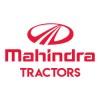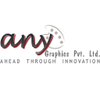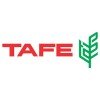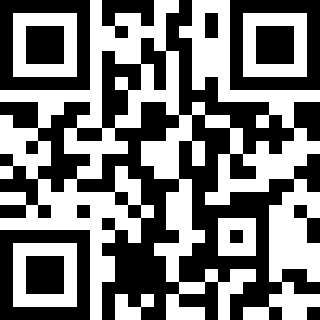Purchase Executive
200+ Purchase Executive Interview Questions and Answers

Asked in Tata AutoComp Systems

Q. Could you explain the different types of purchase orders?
There are three types of purchase orders: Standard, Blanket, and Contract.
Standard Purchase Order: Used for one-time purchases of goods or services.
Blanket Purchase Order: Used for recurring purchases of goods or services over a period of time.
Contract Purchase Order: Used for long-term purchases of goods or services with a specific supplier.
Each type of purchase order has its own unique characteristics and is used in different situations.
For example, a company may use a stan...read more

Asked in Tata AutoComp Systems

Q. How would you handle a critical situation caused by a problem with a supplier?
Handling critical situations with suppliers requires proactive communication and contingency planning.
Establish clear communication channels with suppliers
Develop contingency plans for potential supply chain disruptions
Regularly review and update supplier contracts
Maintain a diverse supplier base to mitigate risk
Monitor supplier performance and address issues promptly
Collaborate with cross-functional teams to identify and resolve supply chain issues
Purchase Executive Interview Questions and Answers for Freshers

Asked in Tata AutoComp Systems

Q. What are the differences between a direct supplier and an indirect supplier?
Direct suppliers provide goods or services directly to the company, while indirect suppliers provide goods or services to the direct suppliers.
Direct suppliers are involved in the production process, while indirect suppliers are not.
Direct suppliers are usually larger and have a closer relationship with the company.
Examples of direct suppliers include raw material providers, while indirect suppliers include packaging suppliers.
Direct suppliers have a greater impact on the qua...read more

Asked in JBM Group

Q. What is the difference between CRCA D and CRCA EDD?
CRCA D and CRCA EDD are two different types of cold-rolled steel sheets with varying properties.
CRCA D has a lower yield strength and is more ductile than CRCA EDD.
CRCA EDD has a higher yield strength and is less ductile than CRCA D.
CRCA D is used for applications that require high formability, while CRCA EDD is used for applications that require high strength.
CRCA D is cheaper than CRCA EDD due to its lower strength.
CRCA EDD is more suitable for applications that require wel...read more

Asked in Tata AutoComp Systems

Q. What is the difference between an open PO and a closed PO?
Open PO and Close PO are different in terms of their status and completion.
Open PO refers to a purchase order that is still active and has not been fully processed or completed.
Close PO, on the other hand, refers to a purchase order that has been fully processed and completed.
Open POs may still require actions such as receiving goods or services, invoicing, or payment.
Close POs indicate that all necessary actions have been taken and the procurement process for that order is f...read more

Asked in Almoayyed International Group

Q. What are the top ten high-class items that you are currently managing?
I am currently managing a variety of high-class items including luxury cars, designer clothing, fine jewelry, high-end electronics, and gourmet food items.
Luxury cars
Designer clothing
Fine jewelry
High-end electronics
Gourmet food items
Purchase Executive Jobs



Asked in Numenor

Q. Why are you looking for a switch?
Looking for growth opportunities and a challenging role
Seeking a more challenging role to enhance my skills
Looking for growth opportunities in my career
Interested in exploring new industries and sectors
Seeking a better work-life balance
Current company does not align with my values and goals

Asked in Mahindra Tractors

Q. What is your knowledge of soft skills?
Soft skills are essential for effective communication, teamwork, and problem-solving in the workplace.
Soft skills refer to personal attributes that enable individuals to interact effectively with others.
Examples of soft skills include communication, teamwork, problem-solving, adaptability, and leadership.
Soft skills are crucial for building relationships, resolving conflicts, and collaborating with colleagues.
They are important for effective negotiation, decision-making, and ...read more
Share interview questions and help millions of jobseekers 🌟


Asked in Halonix Technologies

Q. How many types of transformers are there and where are they used?
There are several types of transformers used in various applications.
Power Transformers: Used in power transmission and distribution systems.
Distribution Transformers: Used to step down voltage for distribution to end-users.
Instrument Transformers: Used for measuring and protecting electrical systems.
Auto Transformers: Used for voltage regulation in specific applications.
Isolation Transformers: Used to isolate circuits and provide safety.
Potential Transformers: Used for volta...read more

Asked in JBM Group

Q. What are the different steel grades used as raw materials, and what are their properties?
RM steel grades and their properties depend on the intended use and manufacturing process.
RM stands for 'refined material' and is a type of steel that has undergone additional processing to improve its properties.
Common RM steel grades include RM10, RM12, and RM15, each with varying levels of strength and ductility.
Properties of RM steel grades can include high tensile strength, good weldability, and resistance to corrosion and wear.
RM steel is often used in the manufacturing...read more

Asked in G R Infraprojects

Q. When purchasing materials, what are your priorities: cost control or fulfilling requirements?
Balancing cost control and fulfilling requirements is crucial in purchasing to ensure quality and efficiency.
Prioritize quality: Ensuring materials meet specifications can prevent costly rework or failures. For example, sourcing high-grade steel for construction.
Evaluate total cost of ownership: Consider long-term costs, not just purchase price. For instance, a cheaper supplier may have higher shipping costs.
Supplier reliability: Choose suppliers with a proven track record to...read more

Asked in Elentec Power India (EPI) Pvt. Ltd.

Q. How does procurement differ in the manufacturing and IT sectors?
Procurement in manufacturing and IT sectors differ in terms of sourcing, supplier management, and product complexity.
Manufacturing procurement involves raw materials, machinery, and equipment while IT procurement involves software, hardware, and services.
Manufacturing procurement requires close collaboration with suppliers to ensure timely delivery and quality control while IT procurement focuses on managing vendor relationships.
Manufacturing procurement deals with complex pr...read more

Asked in ANY Graphics

Q. what is P2P process? How you will deal to get early delivery from supplier? how you manage supplier relationship? What are the parameters in Procurement? What is SOP?
P2P process is Procure to Pay process which involves purchasing goods or services and paying for them.
To get early delivery from supplier, we can negotiate delivery terms and offer incentives for early delivery.
Supplier relationship can be managed by maintaining regular communication, providing feedback, and resolving issues promptly.
Parameters in procurement include quality, price, delivery time, and supplier reliability.
SOP stands for Standard Operating Procedure and is a s...read more
Asked in Precitech Heavy Equipments

Q. 1) What is P to P cycle and what is your role in P to P cycle. 2) What is purchasing and Procurument.
P to P cycle refers to Procure to Pay cycle, which involves the process of obtaining goods or services from a supplier and paying for them. Purchasing is the act of buying goods or services, while procurement involves the strategic process of sourcing, negotiating, and acquiring goods or services.
P to P cycle involves steps like requisition, sourcing, purchasing, receiving, and payment.
My role in P to P cycle includes identifying suppliers, negotiating contracts, placing orde...read more

Asked in Gnrc Hospital

Q. How do you maintain reorder level?
To maintain reorder level, monitor inventory levels regularly, set appropriate reorder points, establish reliable suppliers, and use inventory management software.
Regularly monitor inventory levels to identify when stock is running low
Set appropriate reorder points based on lead time, demand, and safety stock
Establish reliable suppliers to ensure timely delivery of goods
Utilize inventory management software to track inventory levels and generate reorder alerts

Asked in Tractors and Farm Equipment

Q. How to do scheduling, how to manage assembly line, monitoring with suppliers, RM grades,
Scheduling and managing assembly line requires close monitoring of suppliers and RM grades.
Create a production schedule based on demand and available resources
Ensure timely delivery of raw materials from suppliers
Monitor RM grades to maintain quality standards
Implement lean manufacturing principles to optimize assembly line efficiency
Regularly review and adjust production processes to improve efficiency and reduce waste

Asked in Neel Metal Products

Q. What is the main importance of purchasing documents?
Purchasing documents are crucial for ensuring transparency, accuracy, and accountability in procurement processes.
Purchasing documents provide a record of all transactions and agreements between the buyer and seller.
They help to ensure that the correct goods or services are received at the agreed-upon price and quantity.
They also help to prevent fraud and ensure compliance with legal and regulatory requirements.
Examples of purchasing documents include purchase orders, invoice...read more
Asked in Evident International

Q. What is the process of purchasing something from a vendor?
The process of purchasing from a vendor involves identifying the need, selecting a vendor, negotiating terms, placing an order, receiving and inspecting the goods, and making payment.
Identify the need for the product or service
Research and select a vendor
Negotiate terms and conditions, including price, delivery, and payment
Place an order with the vendor
Receive and inspect the goods to ensure they meet the specifications
Make payment to the vendor

Asked in Flender

Q. What is the importance of Purchase Indents (PI), Purchase Requisitions (PR), Requests for Quotations (RFQ), Invoices, and Goods Receipt Notes (GRN)?
Purchase documents streamline procurement, ensuring efficiency, accountability, and accuracy in the purchasing process.
Purchase Indents (PI) initiate the procurement process, detailing what is needed and justifying the purchase.
Purchase Requisitions (PR) formalize the request for goods/services, allowing for budget checks and approvals before proceeding.
Requests for Quotations (RFQ) invite suppliers to bid, ensuring competitive pricing and quality options for the required ite...read more

Asked in Sarovar Hotels & Resorts

Q. If a purchase order is sent out unsigned, is it valid?
No, an unsigned purchase order is not valid.
A purchase order is a legally binding document that outlines the terms and conditions of a purchase.
An unsigned purchase order lacks the necessary authorization and can lead to disputes or misunderstandings.
The absence of a signature may indicate that the purchase order has not been reviewed or approved by the appropriate parties.
Without a signature, it may be difficult to enforce the terms of the purchase order in case of any issue...read more

Asked in Mahindra Tractors

Q. What are direct and indirect materials?
Direct materials are used in the production process, while indirect materials are not directly used but support the production process.
Direct materials are essential for the final product and can be easily traced to it.
Indirect materials are not part of the final product but are necessary for production.
Direct materials have a significant impact on the cost and quality of the final product.
Examples of direct materials include raw materials, components, and parts.
Examples of i...read more

Asked in Gnrc Hospital

Q. What is the full form of EOQ?
EOQ stands for Economic Order Quantity.
EOQ is a formula used in inventory management to determine the optimal order quantity that minimizes total inventory costs.
It takes into account factors such as demand, ordering costs, and holding costs.
The formula for EOQ is: EOQ = √((2 * demand * ordering cost) / holding cost)
EOQ helps in balancing the costs of ordering too frequently (resulting in high ordering costs) and ordering in large quantities (resulting in high holding costs)....read more
Asked in Providence Ship Management

Q. How would you reduce the airfreight cost of spare parts for your vessel?
To bring down the cost of airfreight order of spares required for a vessel, one can negotiate with suppliers, consolidate orders, optimize packaging, and explore alternative shipping methods.
Negotiate with suppliers to get better pricing and discounts
Consolidate orders to reduce shipping costs
Optimize packaging to minimize weight and dimensions
Explore alternative shipping methods like sea freight or courier services
Consider using local suppliers to avoid international shippin...read more

Asked in VTP Realty

Q. How do you present your work to senior management?
The ability to show the output to seniors is essential for effective communication and decision-making.
Showing the output to seniors helps in gaining their feedback and approval.
It allows seniors to assess the progress and performance of the purchase executive.
Showing the output can help in identifying any issues or areas for improvement.
It facilitates transparency and accountability in the purchase process.
Examples: Presenting purchase reports, cost analysis, supplier perfor...read more

Asked in JBM Group

Q. How would you describe your time management skills?
Time management is the process of planning and organizing how much time you spend on various activities.
It involves setting goals and priorities
Creating a schedule or to-do list
Eliminating distractions
Delegating tasks when possible
Tracking progress and making adjustments
Examples: Using a planner, setting reminders, breaking tasks into smaller chunks

Asked in Neel Metal Products

Q. What are the day-to-day activities of a purchaser?
A purchaser's day-to-day activities involve sourcing, negotiating, and purchasing goods and services for a company.
Researching potential suppliers and vendors
Comparing prices and quality of products
Negotiating contracts and terms of agreement
Creating purchase orders and tracking deliveries
Maintaining records of purchases and inventory levels

Asked in Vashi Integrated Solutions Limited

Q. If the required module is unavailable, what alternative approaches do you take for purchasing, stock management, and planning?
In purchasing, if alternative modules are available, I would assess their benefits and integrate them for efficiency.
Evaluate the features of the alternative module against current needs.
Conduct a cost-benefit analysis to determine potential savings.
Consider integration capabilities with existing systems to ensure smooth transition.
Gather feedback from team members who will use the new module to understand their needs.
Pilot the new module in a controlled environment before fu...read more

Asked in Neel Metal Products

Q. What are the fundamental skills required for purchasing?
Purchasing fundamental skills include negotiation, communication, market research, and financial analysis.
Negotiation skills to get the best deals from suppliers
Communication skills to effectively convey requirements and expectations
Market research skills to identify potential suppliers and market trends
Financial analysis skills to evaluate supplier proposals and make informed decisions
Knowledge of procurement laws and regulations
Ability to manage supplier relationships and r...read more

Asked in Kveetech Enterprises

Q. Can you negotiate ? How much you can extend payment terms
Yes, I am skilled in negotiation and can extend payment terms up to 30 days depending on the situation.
I have experience negotiating with vendors and suppliers to get the best possible deals.
I always try to find a win-win solution that benefits both parties.
I can extend payment terms up to 30 days if it helps to secure a better price or if there are cash flow constraints.
I am also open to exploring other options such as partial payments or installment plans.
Ultimately, my goa...read more
Asked in Bird Catering And Lounges

Q. the process of acquiring goods or services, typically involving a transaction where money is exchanged for something of value.
The process of acquiring goods or services involves negotiation, selection, and transaction to fulfill organizational needs.
Identify needs: Determine what goods or services are required for operations.
Supplier selection: Evaluate and choose suppliers based on quality, price, and reliability.
Negotiation: Discuss terms, prices, and delivery schedules with suppliers.
Purchase order: Create and send a formal order to the selected supplier.
Receiving goods: Inspect and accept the de...read more
Interview Questions of Similar Designations
Interview Experiences of Popular Companies






Calculate your in-hand salary
Confused about how your in-hand salary is calculated? Enter your annual salary (CTC) and get your in-hand salary


Reviews
Interviews
Salaries
Users










